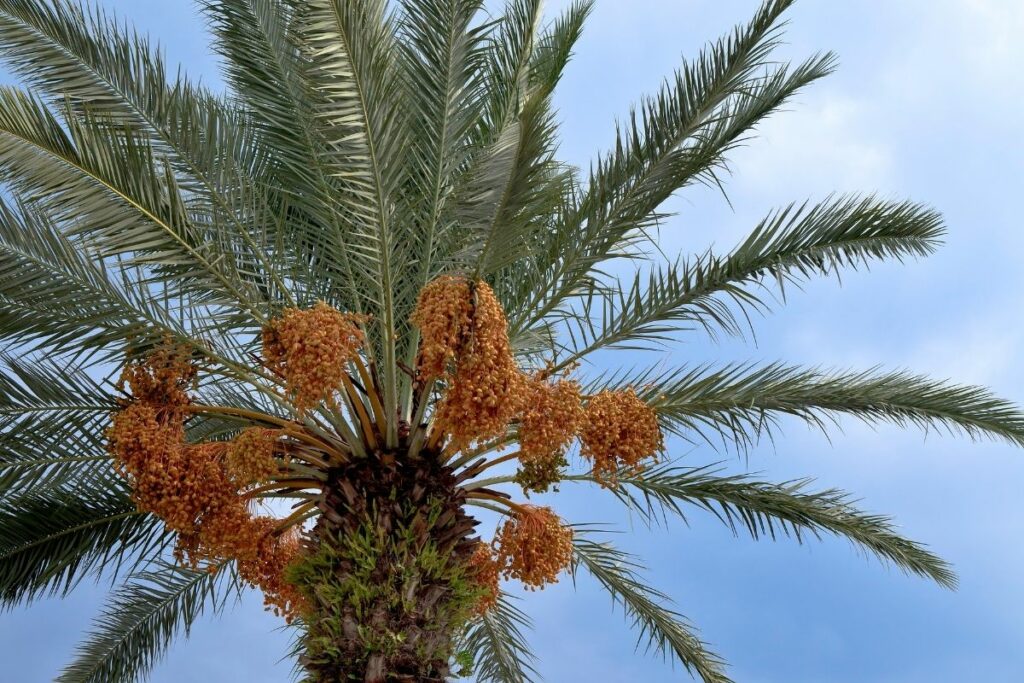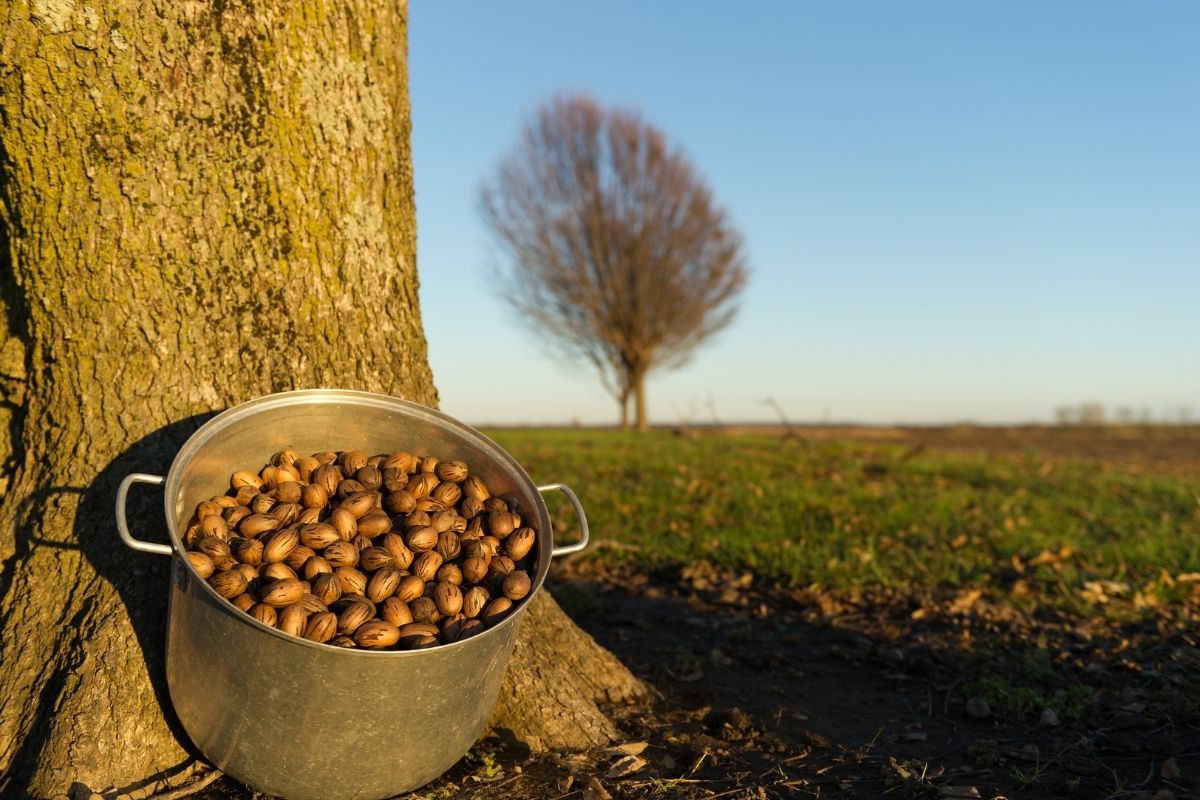
The palm tree is native to tropical climates around the globe. It has become a symbol of wealth and power throughout history. Today, the palm tree remains a symbol of luxury and elegance.
This variety will tolerate temperatures as low as 20 degrees C, so be sure to cover your palm tree if you believe the temperature will go below this. It requires moist soil, regular fertilization, ample sunlight, and good air circulation.
If you choose to buy a mature palm tree, it may cost you anywhere from $40-$100, depending on what type of palm you wish to purchase. Younger palms generally cost less than older ones.
In general terms, young palms have shorter trunks and smaller leaves than older trees. Conversely, older palms are taller, with a longer trunk and more giant leaves.
How Long Does It Take For Queen Palms To Grow?
The queen palm grows quickly, gaining approximately 2 to 6 feet a year if it’s well looked after and has reached maturity.
If you want to plant a palm tree at home, you should start looking for a mature specimen from a reputable nursery. The right climate conditions are also crucial for palm trees’ healthy growth.

Palm trees produce fruits that have been known to contain up to 40% oil by weight. These fruits produced by Queen Palms are dates, processed into jams, syrups, candy bars, ice cream, and margarine.
There’s even a drink made with the juice called “palm wine,” used in some Caribbean countries to treat malaria.
Although, scientists have proven that palm wine isn’t effective at curing malaria. So, if you’re suffering from this illness, please consult a qualified doctor!
When they hear words like coconut, coconuts, and coconut milk, most people think of palm trees. But there are over 200 different species of palms in the world.
Some include Canary Island date palms, royal palms, fan palms, and many others. Many of these trees are found in warm, tropical climates, including the Caribbean and Florida.
Indoor Queen Palms
Palm trees can thrive indoors too! Unfortunately, most varieties require lots of sun rays and bright light. However, this doesn’t mean that you cannot grow palm trees inside if you live somewhere that receives less light.
A large number of palm trees are suitable for indoor gardening. However, they tend to do best in direct sunlight and make sure that you give your palm tree plenty of space.
If you don’t get enough light for your palm tree, you can use artificial lights instead. In addition, you can get a unique lighting system designed just for tropical plants if you want. Then all you need is a way to provide high heat and humidification.
Mature palm trees can be planted in containers. When planning this, make sure that you pick the right size pot first. Choose a big pot to fit the root ball and the container together.
A single palm takes approximately 4 cubic feet of soil to survive. For instance, a pot that holds 6 gallons should contain at least two palms. Also, make sure to buy a pot with drainage holes before planting. Your palms will appreciate it.
You can place your palm tree in a pot filled with a mixture of 1 part peat moss, 2 parts perlite, and 3 parts sand. Ensure that you keep the soil mix loose and allow the roots to breathe freely.
Some people also plant their palms in pots filled with straight soil, although this is unlikely to yield as good results as mixing the compost types.
A Guide To Planting A Queen Palm
When You Are Ready To Plant, Take The Following Steps
Fill the hole or pot you’ve created with about half an inch of soil. Use a shovel or trowel to do this. Don’t fill it up with dirt yet.
Remove the palm tree from its packaging and set it down gently. Then, place it into the hole or pot. Gently push the palm into the soil. You can try making it slightly deeper if necessary.
Next, fill the gaps between the roots and hole sides with soil. Pack the top layer tightly to ensure the plant stays upright. Stop adding soil when the earth is level with the rest of the ground or a few inches below the top of your pot.
After planting, water the tree thoroughly. Avoid overwatering or letting the soil dry out completely. Overwatering usually happens when inexperienced gardeners rush to grow their palms.
If the palm has been sitting in a bag or box in the store, you should add some extra fertilizer after planting.
Keep your palm free of weeds and debris for three weeks after planting. After that, trim off any dead branches. In addition, you can prune your palm every few months to keep it looking healthy.
Don’t forget to fertilize your palm trees once a month. Fertilizing your palms helps them grow strong and prevents diseases from spreading.
It also allows your palms to stay green throughout the year. The best time to fertilize your palms is after the new foliage appears.
Fertilizing your palms doesn’t mean applying lots of nutrients all at once. To avoid overfeeding your palms, spread your application evenly throughout the growing season.
Tips On How To Prune A Queen Palm
Pruning a palm tree involves removing unwanted growths and dead limbs. Removing the old parts and dead limbs will allow the palm to grow smoothly and reach maturity faster.
With proper pruning, you can enjoy watching your palm develop for many years to come.
And suppose you’re having trouble getting started. In that case, we recommend taking your time to take a thorough look at any brown leaves before snipping them off.
Likewise, don’t take away green leaves unless you’re sure you don’t want them.
Final Thoughts
Queen Palms are an excellent addition to a home or garden! They give a tropical vibe to any space they’re placed in and aren’t complex plants to look after.
So, even if you’re a newbie, you can help this species thrive by following our handy guide.
If you want more information on caring for plants, we can help you out! Take a deep dive into our other articles, and you’ll learn tons of helpful information.
- Best Hanging Plant For Low Light - September 4, 2023
- Best Indoor Plants Florida - August 28, 2023
- Best Plants For Bathroom Smells - August 21, 2023








